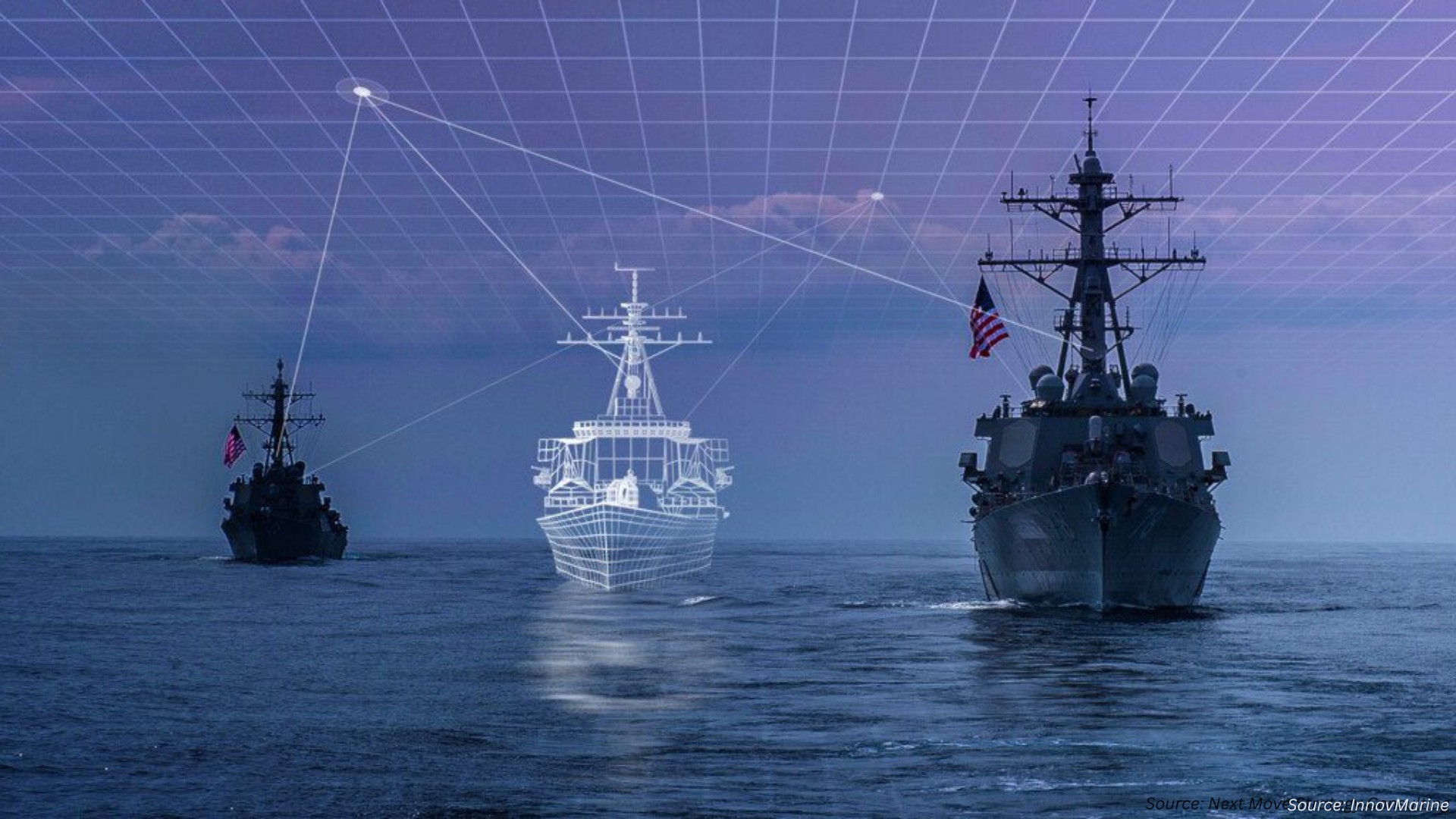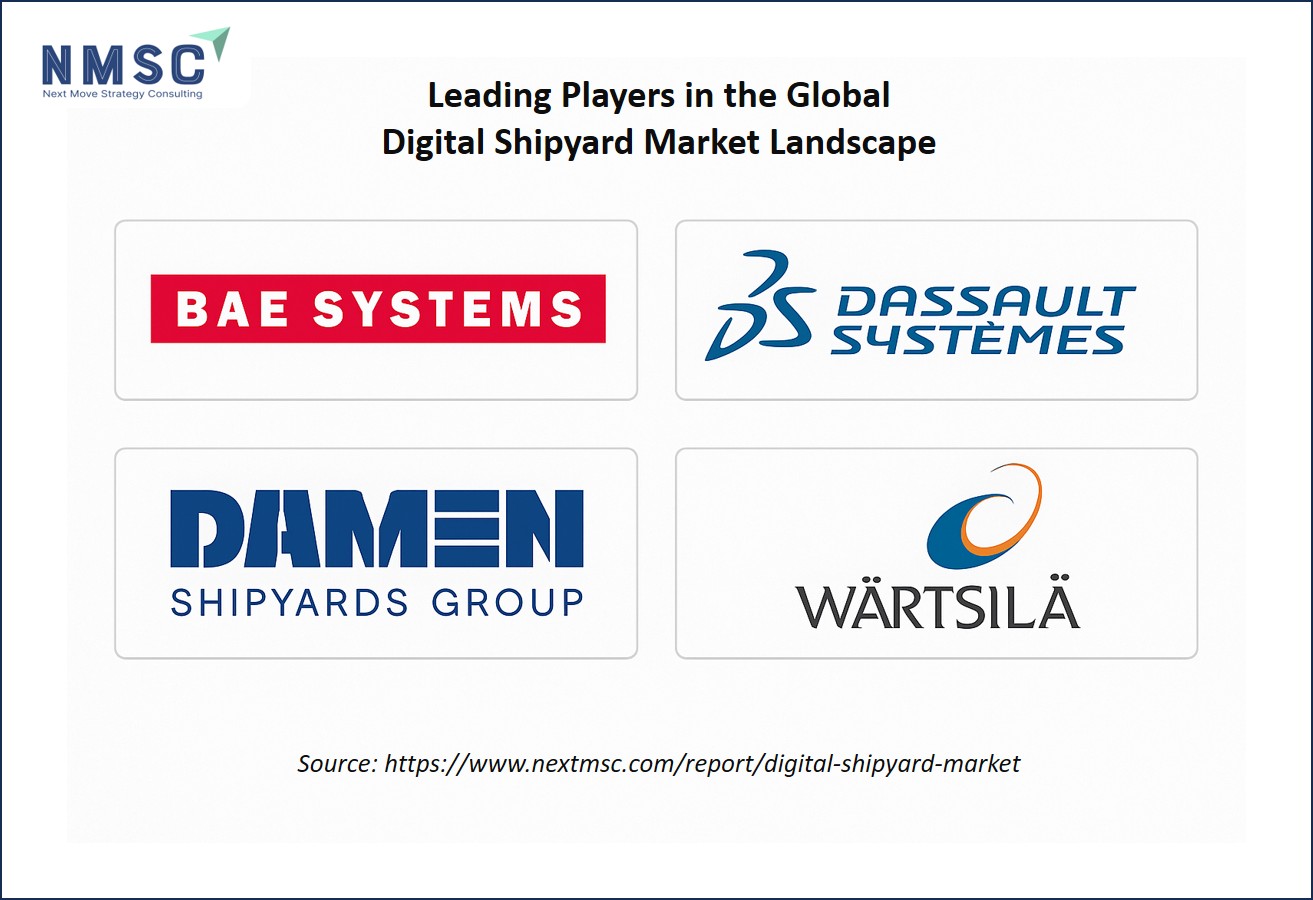Is Your Digital Shipyard Secure? Navigating Cybersecurity in 2025
Published: 2025-09-12

The digital shipyard market is revolutionizing maritime operations, leveraging advanced technologies like automation, artificial intelligence (AI), and the Internet of Things (IoT) to streamline shipbuilding and maintenance. However, as shipyards embrace digital transformation, cybersecurity risks are surging.
In 2025, the maritime industry faces a complex threat landscape, with cyberattacks targeting critical infrastructure and sensitive data. How can digital shipyards protect themselves? This blog explores the cybersecurity challenges, solutions, and actionable steps to secure the future of maritime innovation.
Why Are Digital Shipyards a Prime Target for Cyberattacks?
Digital shipyards integrate interconnected systems, from design software to operational technology (OT), making them vulnerable to cyber threats. The increasing sophistication of attacks, coupled with the maritime sector’s critical role in global trade, amplifies the stakes.
According to PwC’s 2025 Global Digital Trust Insights survey, cybersecurity remains a critical concern for organizations in 2024, with 77% of leaders expecting their cyber budgets to increase over the next year, yet only 2% report having fully implemented cyber resilience across their organization.
Cyber risks top the priority list, with 66% of tech leaders identifying them as their primary risk to mitigate—significantly higher than the 48% of business leaders who share the same concern. The average cost of a data breach is estimated at US$3.3 million, with cloud-related threats (42%), hack-and-leak operations (38%), and third-party data breaches (35%) cited as the most pressing cyber threats. Meanwhile, four-fifths (78%) of organizations have ramped up investment in generative AI (GenAI) over the past year, even as 67% of security leaders acknowledge that GenAI has expanded their attack surface.
Key Cybersecurity Threats in 2025
-
Ransomware Attacks: Targeting shipyard operational systems, causing costly downtime. The average data breach cost in 2024 was $3.3 million, while cloud-related threats (42%), hack-and-leak operations (38%), and third-party data breaches (35%) rank as the highest cyber threats.
-
Supply Chain Vulnerabilities: Third-party vendors and IoT devices create entry points for attackers.
-
Quantum Threats: Quantum computing is a fundamental aspect of cybersecurity. It is going to reshape business security paradigms and disrupt legacy encryption models, and its impact will be extensive and immediate.
Today’s shipyards face a range of complex security challenges across physical, digital, and internal domains.
-
Physical threats remain a major concern due to the high-value equipment, materials, and constant flow of personnel. Without robust physical security measures, shipyards are vulnerable to theft, trespassing, and vandalism. Unauthorized individuals can not only compromise assets but also risk personal safety by entering restricted zones.
-
Cyber threats are on the rise as modern shipyards increasingly depend on digital infrastructure for operations such as ship design, logistics, and inventory tracking. This reliance makes them attractive targets for cybercriminals aiming to steal sensitive data or disrupt critical processes. A successful cyberattack could result in stolen blueprints, costly delays, and even pose national security risks.
-
Insider threats are another critical issue. Security risks don't always come from external actors—employees, contractors, or vendors with system access can intentionally or unintentionally cause harm. A disgruntled worker might exfiltrate sensitive data, or an untrained staff member might fall for a phishing email, compromising the entire network.
Why It Matters
The maritime sector handles majority of global trade, making shipyards critical infrastructure. Cybersecurity in maritime operations is more critical than ever, as the industry faces growing threats from targeted cyberattacks. A successful breach can lead to widespread disruptions, including shipping delays that affect global supply chains, manipulated navigation systems that reroute or even hijack vessels, and compromised cargo manifests that increase the risk of theft or loss. Additionally, the exposure of sensitive crew and passenger data poses serious privacy and safety concerns, while downtime in port operations can result in substantial economic losses. As maritime systems become increasingly digital, safeguarding against these threats is essential to ensure the security and stability of global maritime trade.
Digital shipyards face heightened cybersecurity risks due to interconnected systems and emerging technologies.
How Are Cyber Threats Evolving in the Digital Shipyard Market?
The digital shipyard market is projected to grow significantly, driven by digital transformation and regulatory compliance. However, cyber threats are evolving faster than defenses. Investments in cybersecurity technologies rebounded in 2024, with organizations prioritizing resilience amid rising attack sophistication, and spending approximately $200 billion on cybersecurity products and services.
Emerging Threat Vectors
-
Generative AI Exploitation: Adversaries use GenAI to craft advanced phishing campaigns or bypass authentication systems. As companies contend with cyber security concerns, almost four-fifths (78%) of leaders surveyed have ramped up their investment in GenAI over the last 12 months, with 72% increasing their risk management investment in AI governance.
-
IoT and OT Vulnerabilities: Connected devices in shipyards, such as sensors and robotics, expand attack surfaces. For example, IoT sensors can monitor the structural integrity of cranes, detecting any signs of wear or damage that could lead to accidents. This allows port operators to take preventive measures, such as repairing or replacing the affected components before a failure occurs. In terms of security, IoT devices can be used for access control, tracking the movement of people and vehicles within port premises. By integrating IoT with video surveillance systems, facial recognition, and other security technologies, ports can effectively monitor and manage access to restricted areas, minimizing the risk of unauthorized entry or theft. 58% of leaders noted connected products as a key risk in 2024.
-
Regulatory Pressure: Compliance with cyber regulations drive 96% of organizations to boost cybersecurity budgets.
-
Quantum Computing Risks: McKinsey notes a 13% increase in quantum technology patents in 2024, signaling potential encryption vulnerabilities by 2025.
Industry Response
Major consulting firms like Deloitte, EY, and PwC dominate the cybersecurity consulting sector, offering tailored solutions for maritime clients.
Assessing the potential impacts of cyberattacks on ships and other maritime assets is essential for developing effective incident response strategies. Cyber incidents can have significant financial and operational consequences, with maritime companies experiencing an average loss of $250,000 per attack. Recovery is also time-consuming, taking organizations an average of 60 days to fully restore operations after a cyber incident.
Key statistics highlight the urgency of addressing maritime cybersecurity:
|
Statistic |
Value |
|
Cyber incidents related to human error |
80% |
|
Organizations reporting cyber-attacks in 2017 |
86% |
|
Increase in cyber-attacks during COVID-19 pandemic |
400% |
Cyber threats in digital shipyards are growing in complexity, driven by GenAI, IoT, and quantum advancements. The industry is responding with increased investments and regulatory compliance, but gaps remain. Regular cybersecurity training for staff is essential, with only 20% of maritime organizations currently conducting such training. By addressing these challenges through comprehensive risk assessments and proactive measures, the maritime industry can enhance its resilience against the growing threat of cyberattacks.
What Are the Costs of Cybersecurity Failures?
The financial and operational impact of cybersecurity breaches is staggering. Cybercrime damages are projected to reach multiple trillions. Cybercrime is projected to cost the world $11.9 trillion by 2026 and $19.7 trillion by 2030—exceeding China’s current GDP. While Europe and North America are among the safest regions, Latin America and the Middle East face higher risks. Ransomware, phishing, and social engineering remain common, with sharp rises in cryptojacking (136%) and supply chain attacks (300%). The U.S., Vietnam, and Indonesia lead in KYC rejections and account suspensions due to suspected malicious activity.
How Can Digital Shipyards Strengthen Cybersecurity?
To combat evolving threats, digital shipyards must adopt comprehensive cybersecurity strategies.
Key Strategies
-
Cyber Resilience Frameworks: Only 2% of organizations have implemented firm-wide cyber resilience, per PwC. Shipyards must prioritize holistic strategies.
-
AI-Powered Threat Detection: Leverage AI to monitor and respond to threats in real-time. AI tools, powered by machine learning, continuously learn from new data, enabling them to detect patterns and anomalies that may indicate a threat. This capability is particularly effective in identifying novel attack vectors, such as zero-day exploits or insider threats, which traditional systems often miss. 71% of enterprises are using AI.
-
Quantum-Safe Cryptography: Prepare for “Q-Day” by adopting quantum-resistant encryption. By steadily incorporating quantum-resistant measures, organizations can ensure they are prepared without causing disruption to their current operations. Monitoring developments in quantum computing and staying informed about advancements in post-quantum cryptography will help organizations make informed decisions and remain secure in the face of future technological changes.
-
Employee Training: Regular training reduces human error, a common entry point for attacks. organisations should focus on several key areas like password security, data protection policies, and more.
-
Vendor Risk Management: Assess third-party vendors to secure supply chains. It typically involves establishing risk criteria and performing onboarding and screening for third-party partners and vendors.
Technology Investments
-
Cloud Security: With cloud adoption rising, secure cloud management is critical. The management of cloud security encompasses a broad spectrum of practices, from addressing external threats and enforcing strict access controls to ensuring compliance and fostering a culture of security awareness. Leaders cite cloud technology as a risk factor – 27% of businesses have experienced a public cloud security incident in 2024.
-
Zero Trust Architecture: Implement strict access controls to limit unauthorized access. Zero trust is a security framework based on the principle of "never trust, always verify." It replaces traditional network trust with continuous verification of users, devices, and access requests. By enforcing least-privileged access and evaluating context, it protects data, applications, and systems across cloud, on-premises, and edge environments.
-
Incident Response Plans: Develop and test plans to minimize downtime during attacks. A “Cyber Security Incident Response Plan” is essential for organizations to effectively manage and mitigate the impact of cyberattacks. It outlines a structured approach to handling incidents, ensuring quick and coordinated action. Key components of the plan include identifying the threat, containing its spread, investigating the cause, communicating with stakeholders, and recovering affected systems. To enhance response efforts, organizations should follow best practices such as maintaining a clear, well-documented plan, regularly training employees, leveraging advanced security tools, and collaborating with external experts for additional support.
Digital shipyards can enhance cybersecurity through resilience frameworks, AI-driven tools, quantum-safe encryption, and robust training. Strategic investments are key to staying ahead of threats.
Who Are the Key Players Driving the Global Digital Shipyard Market?
The global digital shipyard market is shaped by several prominent companies, including IFS AB, Pemamek Oy, Dassault Systèmes, BAE Systems, Altair Engineering Inc., AVEVA Group Plc, Wärtsilä, KUKA AG, Damen Shipyards Group, and PROSTEP AG. These industry leaders are actively adopting strategies such as technological innovation, strategic collaborations, and digital transformation initiatives to strengthen their market position and stay ahead in an increasingly competitive landscape.
What Are the Next Steps for Digital Shipyards?
Securing digital shipyards requires proactive, actionable steps to address vulnerabilities and build resilience. Below are practical takeaways to guide maritime organizations in 2025.
Actionable Takeaways
-
Conduct a Cybersecurity Audit: Assess current systems for vulnerabilities, focusing on IoT and OT integration. Engage firms like Deloitte or EY for expertise.
-
Invest in AI and Quantum Solutions: Deploy AI-driven threat detection and explore quantum-safe encryption to future-proof defenses.
-
Enhance Employee Training: Implement regular cybersecurity training to reduce human error risks.
-
Strengthen Vendor Management: Audit third-party vendors to ensure compliance with cybersecurity standards.
-
Develop Incident Response Plans: Create and test plans to ensure rapid recovery from cyberattacks.
Digital shipyards must act swiftly to secure their operations. Auditing systems, investing in advanced technologies, and training employees are critical steps to mitigate risks.
Conclusion
The digital shipyard market is at a crossroads, balancing innovation with escalating cybersecurity risks. As cyber threats grow in sophistication—fueled by GenAI, IoT, and quantum advancements—shipyards must prioritize resilience and proactive defenses.
By investing in AI-driven tools, quantum-safe encryption, and robust training, maritime organizations can safeguard their operations and maintain their critical role in global trade. The time to act is now—secure your digital shipyard for a resilient future.
About the Author
 Sneha Chakraborty is a seasoned SEO Executive and Content Writer with over 4 years of experience in the digital marketing space, bringing a strong command of online visibility strategies and a keen insight into the evolving digital landscape. She specializes in enhancing online visibility and user engagement through data-driven strategies and creative content solutions. Sneha is passionate about translating complex digital concepts into accessible content for a wide audience. Outside of work, she enjoys reading, sketching, and exploring the outdoors through nature photography.
Sneha Chakraborty is a seasoned SEO Executive and Content Writer with over 4 years of experience in the digital marketing space, bringing a strong command of online visibility strategies and a keen insight into the evolving digital landscape. She specializes in enhancing online visibility and user engagement through data-driven strategies and creative content solutions. Sneha is passionate about translating complex digital concepts into accessible content for a wide audience. Outside of work, she enjoys reading, sketching, and exploring the outdoors through nature photography.
About the Reviewer
 Debashree Dey is a skilled Content Writer, PR Specialist, and Assistant Manager with strong expertise in Digital Marketing. She specializes in crafting visibility strategies and delivering impactful, data-driven campaigns. Passionate about creating engaging, audience-focused content, she helps brands strengthen their online presence. Beyond work, she draws inspiration from creative projects and design pursuits.
Debashree Dey is a skilled Content Writer, PR Specialist, and Assistant Manager with strong expertise in Digital Marketing. She specializes in crafting visibility strategies and delivering impactful, data-driven campaigns. Passionate about creating engaging, audience-focused content, she helps brands strengthen their online presence. Beyond work, she draws inspiration from creative projects and design pursuits.

















Add Comment